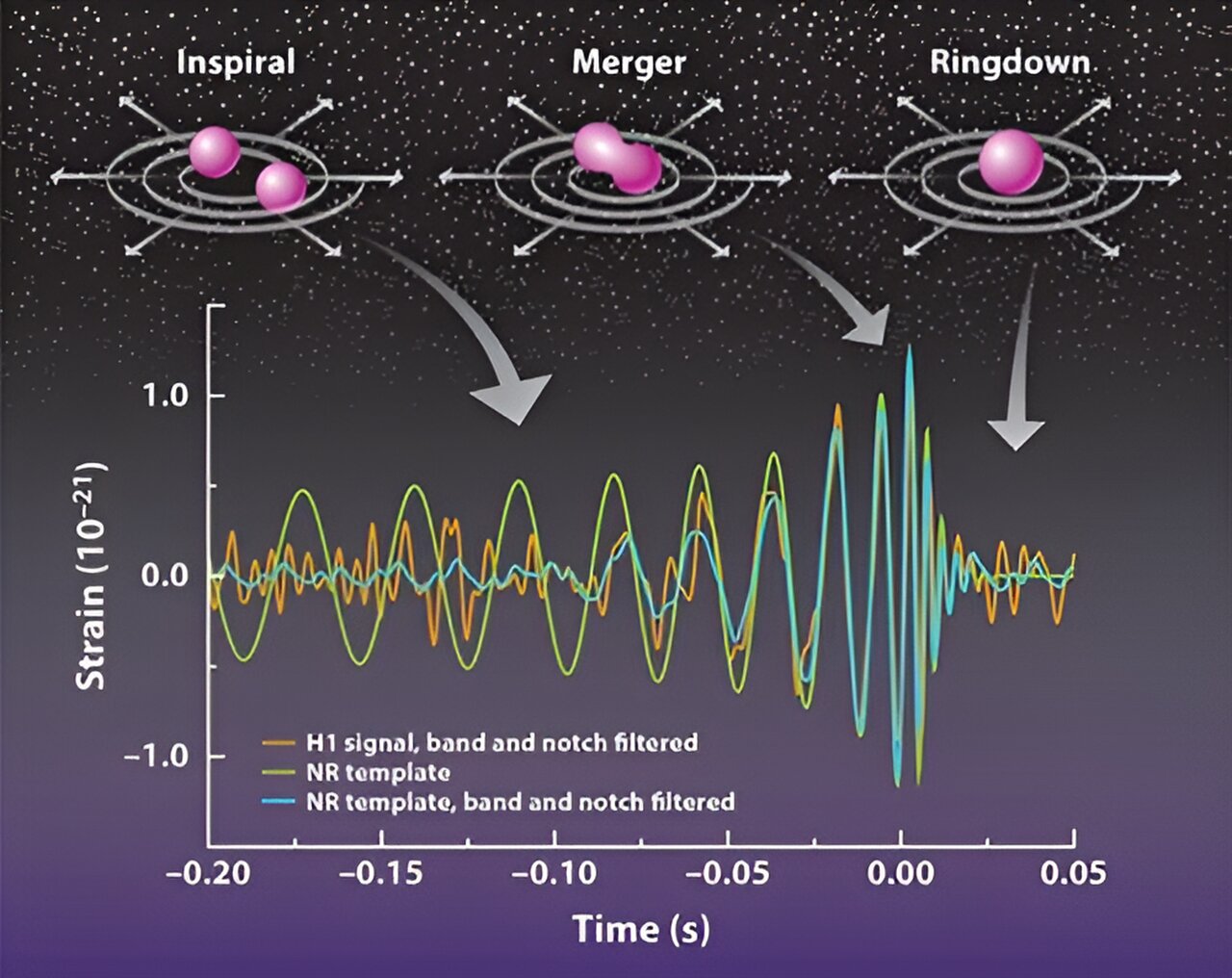Gravitational waves are fluctuations in space itself that are born when neutron stars and black holes merge. Until now, every time one of the giant detectors caught them, an entire investigation had to be conducted to determine where they came from. But now scientists have created a machine learning method that can anticipate these actions.

Searching for gravitational waves
Since the direct detection of gravitational waves in 2015, scientists have relied on a certain margin of error: they can only detect waves that match theoretical predictions, which is clearly not the way science is typically done.
Now a group of physicists have proposed a computational model that can capture all gravitational waves passing by Earth, not just the expected ones.
A decade after Einstein discovered that his general theory of relativity envisioned gravitational waves — ripples traveling through the fabric of space-time — physicists calculated their expected signatures for several simple scenarios. One was the waveform of a black hole-black hole merger, which was the first waveform detected from interferometric data obtained on September 14, 2015.
Observers needed to know what to expect to teach their interferometers what to look for, because a passing wave could only move the arms of an interferometer by a thousandth of the width of a proton. Ambient noise, even trucks passing by, could easily affect the movement of the arms, which had to be filtered out to discern a true gravity wave.
Calculations have also been made for neutron star-black hole mergers and neutron star-neutron star mergers. In addition, a signature of continuous gravitational waves generated by rapidly rotating symmetric neutron stars and stochastic gravitational waves arising, for example, from the Big Bang could be obtained from the data. Using these models, more than seven dozen gravitational waves have been detected.
Variety of gravitational waves
But this method misses gravitational waves that don’t appear in the form of one of the known predictions, known as “transients” or “gravitational wave bursts,” from unexpected events based on other physics. In addition, current detection methods are simply too slow.
Once a gravitational wave has passed through, astronomers want to be able to quickly identify its source to tell other observatories to look for any accompanying electromagnetic or particle events from the same source – so-called astronomy with many interlocutors.
Electromagnetic radiation, including visible light, and neutrinos are expected from some large, violent astrophysical activity, including ordinary binary pair mergers. Once a possible gravitational wave flux is obtained, processing and communication with other instruments can currently require hundreds of dedicated processors and take tens of seconds or even minutes, which is too slow for “ahead of time” warnings.
Machine learning algorithms for wave search
In recent years, physicists have been trying to overcome the limitations of waveforms by using convolutional neural networks (CNNs), a type of specialized deep learning algorithm, to avoid detectors trained to recognize only certain events.
However, as of today, programmed CNNs still need an accurate model of the target signal for training, and therefore fail to notice unexpected sources such as those expected from supernova core collapse and long gamma-ray bursts. Unknown physics and computational limitations can destroy all chances of detecting a multi-location signal.
So the researchers aimed to use a single processor and report gravitational wave events at about one second. They developed a multi-component architecture in which one CNN detects transients occurring simultaneously in multiple detectors, while a second CNN looks for correlation between detectors to eliminate random noise or failures.
Thus, “our search utilizes machine learning and aims to help point the ‘traditional’ telescopes towards such a source in a matter of seconds,” said Vasileos Skliris of the Institute for Gravitational Research in the School of Physics and Astronomy at Cardiff University in Wales, UK. “In this way, we will be able to extract the most information we can out of such unexpected events.”
The group’s approach to deep learning differed significantly from previous methods: instead of teaching CNNs to identify specific waveforms in the data, they created CNNs that could detect consistency in strength and timing between two or more data streams.
CNNs were then trained by using simulated signals and random bursts of noise with similar characteristics. Due to the use of identical waveforms and noise, neural networks could not rely on the waveform to make decisions; they learned to assess how well the detectors agreed with each other, which allowed their models to detect gravitational-wave transients in real time.
“Back in the 1960s, gamma ray bursts were the novel astrophysical surprise when gamma ray astronomy took its first steps,” Skliris said. “Gravitational wave astronomy is at that same early age, and we might have an exciting future ahead of us.”
According to phys.org


